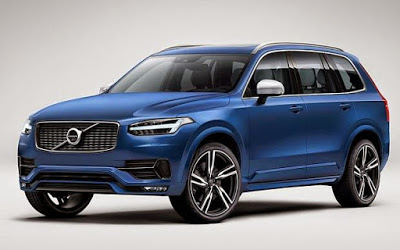 As a generation of Motorists living amidst the turmoil of tedious traffic, we are fortunate enough to be experiencing car technology on the cusp of a historical motoring revolution. Autonomous driving is the motor revolution predicted to transform our driving experience for the better, saving lives and reducing traffic. It is perhaps as revolutionary as the introduction of the internal combustion engine itself and it is hitting the busy roads of London from next year, secretly steering its own way through terrible traffic.
As a generation of Motorists living amidst the turmoil of tedious traffic, we are fortunate enough to be experiencing car technology on the cusp of a historical motoring revolution. Autonomous driving is the motor revolution predicted to transform our driving experience for the better, saving lives and reducing traffic. It is perhaps as revolutionary as the introduction of the internal combustion engine itself and it is hitting the busy roads of London from next year, secretly steering its own way through terrible traffic.
The dawn of the autonomous self-driving vehicle is on the horizon with well-known brands like Tesla leading the Vanguard. Many major car manufacturing brands are now following behind, including Nissan, Mercedes with their recent Vision concepts and Volvo to name but a few.
Volvo’s autonomous driving pilot project is due to be launched next year and will be occupied by average families in London to test the efficiency of such cars and how well they work on busy roads alongside normal vehicles. The pilot project will involve 100 unmarked autonomous XC90 Volvo’s, and will be used by families on the busy roads of London. Though the project appears to be a great motoring experiment for autonomous cars, it does not come without its flaws and haters.
It is understandable that when new technology is introduced to a market and infrastructure that is built so heavily around human control, that a manufacturer may encounter teething problems, for example issues such as who is responsible for Insurance pay outs in the event of an accident where it is the car’s fault, or the initial reluctance that may exist within customers to adopt an autonomous car. Both these issues are reasonable however, for the most part they can be overcome by 1. Better knowledge on autonomous driving and its benefits and 2. Clear structures put in place to control hijacking and accidents that are the fault of the autonomous car through rigorous surveillance.
So while both the above are issues they are not a real hurdle for Volvo. According to a recent article in the UK based Observer newspaper, there could potentially be a much more underrated and everyday challenge to autonomous vehicles lurking on British roads, which is what has prompted Volvo to hide the autonomous identity of the Volvo XC90 cars to be used in the project. So what is the real challenge?
The answer is the ‘aggressive UK motorists’ these are the same guys who’ll slyly cut through traffic and slither between vehicles to overtake on bends like rebellious snakes. Sometimes ruthlessly breaking the laws of traffic and arrogantly force their way onto the road. We have all been victims to these rebels on the road who think they are attracting attention with their show plates, playing their music ridiculously loud, cutting in front of other road users and never indicating, which is a major pet peeve for many motorists.
According to the survey published by the London School of Economics (LSE), respondents felt autonomous vehicles may be more easily bullied or may actually become targets for bullying on the road by aggressive human drivers who may want to essentially mess with the self-driving car. Though not a solution for aggressive driving by other motorists in general, Volvo’s intent to unmark the autonomous cars aims make their test cars less susceptible to bullying and targeted bad behaviour.
The LSE survey revealed some interesting findings on the response by other drivers to autonomous cars, which substantiates the fact that this attitude towards the pliability of autonomous vehicles could exist and could manifest itself on the road. One of the participants unashamedly said ‘I’ll be overtaking all the time because they’ll be sticking to the rules’. Attitudes like this are what cause a threat to the occupants of autonomous cars.
But the fear surrounding motor monsters does not worry Britons alone; Swedish motorists share the same anxiety. Their approach to limit the trouble that the motor monsters could create has led them to a hopeful solution; commuters can switch to self-driving mode during busier areas to limit the number of offenders. Influenced by Sweden’s approach, Britain plans to use the same strategy. Drivers will have the choice to switch to self-driving mode when on the busiest routes such as the M4 from Heathrow to the Capital. This will not only divert attention from them and their ‘autonomous car’ but also reveal how the car handles traffic.
From the onset, an autonomous car test in one of the busiest cities in the world seems like quite a brave idea due to the potential conflict with other road users and accidents. But attitudes towards self-driving cars are in general positive especially among technophiles, it is clear that autonomous cars have a place on the road.
2018 sounds like an eventful motoring year with unmarked autonomous cars roaming freely on the busy streets of London. Keep your eyes open and see if you can spot one.
Article written by Aansa Nadeem on behalf of Angel Plates, a UK based online number plate maker

